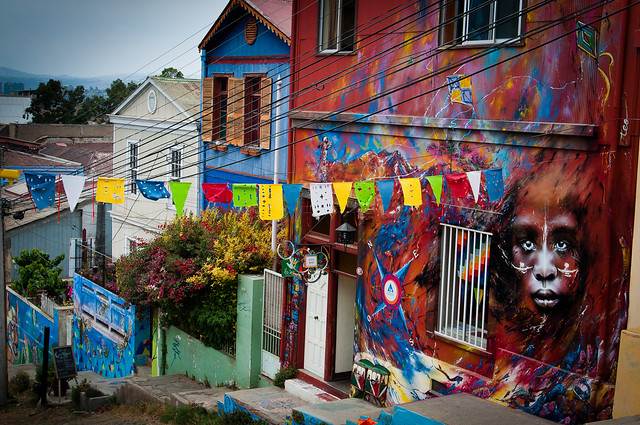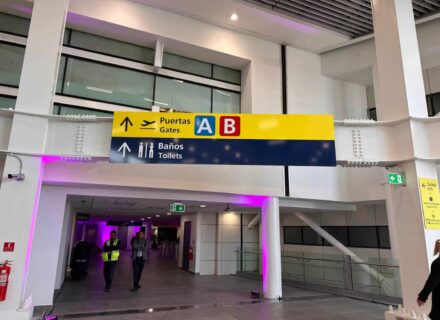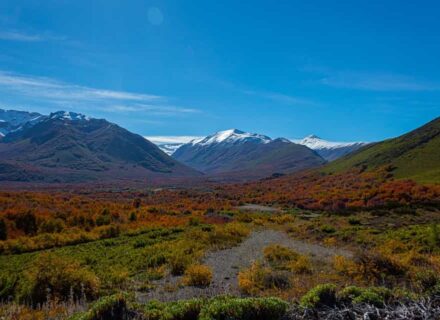Folklore and Traditions
RODEOS
Los Andes medialuna (demilune) is a typical place where rodeo competitions are held.
FESTIVAL DEL HUASO (CHILEAN COUNTRY-MEN FESTIVAL)
It is held every year in Olmué. In this festival, traditional songs like tonadas and cuecas are sung. The show also includes folkloric representations and humorists.
Cities
VALPARAÍSO
It is located 15 min. from Viña del Mar. Valparaíso is the house of the Legislative Power and the principal port of the country. Narrow and rugged streets lead to fourteen of its forty hills; you can also get access to them by typical public elevators.
These are some recreational activities that you can practice in the port: trolley bus rides along the city, sight-seeing expeditions, hiking, boat trips along the bay, sun-bathing, and tasting typical food, which is mainly based on fish and shellfishes.
The beaches are roughly sloped and the waters reach temperatures of 15 ºC during summertime. The average temperature is 17 ºC.
These are some of the beaches you can find here: Las Torpederas, San Mateo and Portales.

VIÑA DEL MAR
This a crowded city of recreation and repose. It has a very complete tourist infrastructure: a Casino, cinemas, theaters, hotels, boarding houses, discotheques and open cafés.
In addition to the cultural and recreational activities, it is also possible to practice the following activities: expeditions, swimming and sun-bathing, walking along the coastal avenues, “victoria” rides (horse-powered carriages) and tasting the great variety of fishes and shellfishes.
The weather is generally warm, with annual average temperatures of 14º C, and 18º C during summertime. The waters reach a temperature of 15º C.
Some beaches that you can find here are: Caleta Abarca, Acapulco, Las Salinas, El Sol, Los Marineros and Las Cañitas.
LOS ANDES
Los Andes is an important communication center with foreign countries, thanks to its International Road to Mendoza. This place is ideal for outdoor activities, adventure tourism, ski and mountain climbing in the Cordillera.
Attractions: You can taste typical Chilean food. It is well-known for its hand-painted pots and pans, which are denominated Cala Artistic Ceramics. “Victoria” rides are also available here (Santa Teresa Avenue, near Esmeralda Street and the old Monastery.
Archaeology: Mapuche influence remainders of the pre-Columbian period can be found here; Paidahuén Hill, Las Vizcachas Village, Mercochas Hill, and Mocochen Hill. There is a petrified forest in the Cordillera, which is thought to be from the glacial age.
SAN ANTONIO
This is a constantly-growing city. In 1995, it became the most important port of Chile, concerning cargo transfers and most part of the exportation of manufactured, agricultural and mining products.
The port is an important supplying center for all the south littoral of Valparaíso. It has a dynamic commercial activity and a permanent nocturnal life.
The weather is tempered, with a long dry season. The annual average temperature reaches 14º C.
It has three main urban areas: San Antonio Downtown; Barrancas and Llo Lleo.
History: The community was founded on December 22,1891. The construction of the port began in 1910.
Attractions: Mirador Hill, Cristo Maipo, Barrancas, Llo Lleo, San Juan de Llo Lleo Artificial Lagoon, the Port, Paseo Bellamar, Puertecitos, Crane 82, Pacheco Altamirano little fishing port, San Antonio s Natural Sciences and Archaeology National Museum, and rural areas.
LA LIGUA
It is the country s wooden handcrafted creations center. In the downtown of the city and also in Valle Hermoso town, you can find most of the stores devoted to the manufacturing and selling of these wooden products, with highly convenient discounts.
Here you can find the famous “Dulces de La Ligua” – La Ligua typical pastries -, such as alfajores (pastry filled with a sweet filing), albos merengues (white meringue pastries), mantecados (pastries prepared with lard), empolvados, chilenitos, palitos and mil hojas.
You can find many typical food restaurants and boarding houses in the downtown of the city.
SAN FELIPE
This an old city that was founded in the midst of exuberant locations typical of the Chilean central countryside. From an architectural point of view, ancient colonial houses coexist with modern constructions. It is famous for the exceptional quality of its fruit and vegetables.
It was founded in 1740 by the Governor Manso de Velasco, under the name of San Felipe el Real.
Some important buildings are: Del Buen Pastor Convent, San Antonio del Almendral Convent and Church, whose tower was designed by Gustave Eiffel, and Curimón Church.
San Felipe s Plaza de Armas (parade square) is considered one of the most beautiful ones of the country, with its leafy trees and sculptures representing the four seasons of the year.
El Almendral town is located 3 km. from San Felipe s downtown. It is well-known for its typical food, its chicha (typical Chilean alcoholic beverage) and its homemade bread.
QUILLOTA
This is a beautiful and ancient colonial city. Quillota Valley is situated in the midst of the high mountain tops of Cordillera de la Costa . Its particular warm weather allows the cultivation of subtropical fruit, like chirimoyas and avocados, which are known all over the world.
Among Quillota s attractions, we can mention the Plaza de Armas (parade square), with its palm trees and a hand-carved cypress, which represents on one side the capture of Diego Portales that took place in this site. On the other side of the tree, the carving represents the main activities of this zone, such as agriculture. The square also has some sculptures that represent the four seasons of the year. It is important to mention the following attractions: El Eden Tourist Center, which has an amphitheater, a restaurant, an events hall, among other services; the Armored Cavalry Academy, which has jump and polo courts, and belongs to the Chilean Army; Santo Domingo Convent and Casa Colorada (reddish house).
Gastronomy
Mainly fish and shellfish cooked in many ways. For example, “chupe de locos (Chilean typical dish of sea scallops)”, which is a hot fricassee prepared with grounded locos, grated bread and various seasonings. “Caldillo”, which is a soup prepared with fish, potatoes, onions and seasonings. “Mariscal”, which is a dish that contains a variety of shellfishes seasoned with oil, lemon juice and condiments. You can also taste fried hake; “cebiche”, which is a dish of raw, grounded fish marinated in lemon juice and seasonings; lobsters; crabs; sea urchins, and many other typical sea products of this region. In addition to sea food, you can also taste meat, pork, goat, and the typical Chilean salad prepared with tomatoes, onions, chili peppers and coriander.
There are many international and typical food restaurants in this Region, specially in Viña del Mar and Valparaíso.
Historical Places and National Monuments
HISTORICAL PLACES AND NATIONAL MONUMENTS
VALPARAÍSO
VALPARAÍSO ADUANA
It was declared a National Monument in 1976. It is located between Bustamante and Lord Cochrane Streets. This building was built in 1854 by the American architect Juan Brown. The style of the construction is American colonial. The structure has thick walls made of bricks, covered with a 1.20 m. layer of stucco, and built over stone foundations. The roof, the stairs and the mezzanine framework are wooden.
CLOCK TOWER AND BARÓN STATION
It was declared a National Monument in 1972. It is situated between España and Argentina Avenues. At first sight, this building looks like a brick tower of 15.20 m. height, with an interior wooden stair providing access to the inner section of this English origin clock.
The clock was built in 1865 and it is located in the same railroad station in which the first train used to travel from Santiago to Valparaíso.
POLANCO ELEVATOR
It was declared a National Monument in 1976. It is located between Argentina Avenue and Simpson Street.
It was inaugurated in 1916, and it is the most typical elevator of the city. This is an access way to Polanco Hill. You can enter its lower entrance, which is situated in Simpson Street, by going through a 1.5 m. long and 2.5 m. height tunnel. The elevator ascends in vertical position until reaching a first station, then it continues the ride inside a tower from which you can get access to the surrounding streets by crossing a bridge situated at 58 m. height. From the last station, you can sight the popular districts around the tower.
DE LA MATRIZ CHURCH
It was declared a National Monument in 1971. It is located in La Matriz small square.
This is the oldest temple of the city. It was built in 1559 and then rebuilt in 1837. Inside the Church, you can see the Cristo de la Agonia (Christ in agony) statue, which was carved in wood at the end of the 17th century (Sevillian School). It is very difficult to see the statue s face, because it is situated in a very unusual position.
ROSS PALACE
It was declared a National Monument in 1976. It is located in Nº 1337 Salvador Donoso Street. It can be accessed either from Brasil Avenue or Bellavista Street. It was built from 1888 to 1890, and it was enlarged in 1929. It currently houses the German Club.
ROBINSON CRUSOE ISLAND, JUAN FERNÁNDEZ ARCHIPELAGO
These islands are very interesting from a botanical point of view. This natural place is considered one of the most privileged ones to carry out flora and fauna researches.
SANTA BÁRBARA FORT
It was declared a National Monument in 1979. It was built in 1749 by the Spanish Government to protect the Archipelago islands from pirates and corsairs that used to raid the coasts of America. It was rebuilt in 1974.
REMAINDERS OF THE GERMAN BATTLESHIP DRESDEN
It was declared a National Monument in 1985.
During World War I, Cumberland Bay was the scenery of a naval combat: the German battleship Dresden versus the English ships Kent, Orama and Glasgow. After chasing and attacking the Dresden, they finally sank it. The traces of the combat can be sighted in Punta San Carlos cliffs. The mortal remains of the combatants lie buried in the town s cemetery.
VIÑA DEL MAR
RIOJA PALACE
It was declared a National Monument in 1985. It is located between Quillota and 3 Norte Streets. This is an ancient seigniorial construction that was built at the beginning of the century (1907). Today it houses the Music Conservatory and Palacio Rioja Cinema.
You can visit this place from Tuesday to Sunday 10:00 to 14:00 hrs. and 15:00 to 18:00 hrs.
ISLA NEGRA
PABLO NERUDA S HOUSE
It was declared a National Monument in 1990. It is situated in Camino Vecinal s/n.
This a beautiful stone and wood large house, which is located next to the sea. It represents the spirit of Pablo Neruda, the famous Chilean poet, who was awarded the Nobel Prize for Literature in 1971.
In addition to the house, you can enjoy the typical embroidering works knitted by handcrafters of the town.
Other activities can be also practiced here: walking, collecting agates, sun-bathing, beach games, and taste the typical food (fish and shellfish).
SAN FELIPE
SAN FRANCISCO DE CURIMÓN CHURCH AND CONVENT
It was declared a National Monument in 1971. It is located in the highway that connects Los Andes with San Felipe. It belongs to the Curimón Franciscan Order. It houses many valuable paintings from 16th, 17th and 18th centuries, and also other objects from the colonial times.
DEL BUEN PASTOR CHURCH AND CLOISTER
It was declared a National Monument in 1989. It is located in the intersection of Yungay Street and Alameda Lib. Bernardo O Higgins avenue.
The Church was inaugurated in 1872. The high altar is very valuable: it is made of cast bronze and was awarded the first prize in the Religious Art Exhibition, which was held in Paris in 1890.
“Lourdes Virgin Cavern” is located next to the Church.
CABILDO
It is located 20 km. from La Ligua.
This a typical town situated in the midst of an exuberant landscape of valleys and hills. In the way to the town you can come across with the patronal house of la Quintrala, which is an historical site that is situated in El Ingenio Ranch.
Doña Catalina de los Ríos y Lisperguer owned this place under a patronage mandate. This 17th century aristocrat lady was best known as la Quintrala. She was constantly accused of committing murder and flagellation against her slaves. After she had died, a thousand masses were celebrated just as she ordered in her last hours. Her mortal remains lie buried in San Agustín Church, in Santiago, next to Cristo de Mayo image. She had had this image taken out of her house because she did not wanted to see “men with unfriendly faces” in her house.
NATIONAL PARKS V REGION
LA CAMPANA NATIONAL PARK
It is located at 32 km. southeast of Quillota. In 1977, this National Park was declared Biosphere National Reservation by UNESCO, since it represents a scientific heritage for the Earth.
Archaeological aspects: The most important vestiges are the “marai”, which are stones cut by the ancient natives, who used them for grinding rocks and thus obtain minerals, specially copper. These rocks can be seen in the area of Los Peumos, Granizo section. In the Ocoa section you can sight archaeological traces, such as mortars, grinding instruments, and “tácitas” stones in the area of La Buitrera Ravine.
Historical aspects: A series of structures built in ancient times ware discovered in Ocoa Valley. These correspond to ovens in which coal was produced, and ovens in which honey was boiled.
Chilean palm trees are the typical vegetation of the Ocoa section.
The typical birds that you can find here are: partridges, eaglets, owls, humming birds, thrushes, etc.
JUAN FERNANDEZ ARCHIPELAGO NATIONAL PARK
It is located at 674 km. from the continent, in the Pacific Ocean.
The Archipelago has been declared a National Park by the Chilean Government and Biosphere National Reservation as a heritage for mankind (UNESCO 1977), because the highest concentration of flora and fauna endemic species can be found here.
Superficies: 18,300 hectares, of which 9,300 correspond to Robinson Crusoe Island, 8,500 hectares to Alejandro Selkirk Island, and 500 hectares to Santa Clara Island.
History: During the 17 and 18 centuries, the islands were visited by corsairs who used them as shelters.
The Archipelago became a world legend after the publication of the book “The Adventures of Robinson Crusoe” (1719) by Daniel Defoe. He based on the adventures of Alejandro Selkirk, a Scottish sailor who lived in the island for 4 years.
Fishes: The sea here is ideal for fishing and practicing submarine sports. The water is considerably warmer and more transparent than that of the continental coast, because the Archipelago is out of the influence of the Humboldt current. In addition to the traditional lobster, you can also find here a great variety of fishes: vidriolas, flying fishes, modemas, codfishes, rock salmons, pampanitos, etc.
Flora: It is characterized for being almost completely native and exclusive of this place, for instance: Chonta palm tree, naranjillo, Juan Fernández cinnamon tree and apple tree, michay, myrtle, sándalo (which is almost extinguished) and many arboreal and climbing ferns.
Fauna: – birds: red hummingbirds and “rayaditos”. – mammals: mostly introduced species, such as goats, rabbits and rats; it also possible to find marine mammals like “de dos pelos” seals, and marine elephants. Herds of marine wolves and flocks of marine birds (fardelas) inhabit the little bays, without fearing to man.
Gastronomy: The typical dishes of the Island are cebiche (raw fish marinated in lemon juice and cut into pieces), peroé and lobster-based food.
Handcrafting: Island inhabitants work with wood (crosses and sándalo, chonta and coral medallions) and marine shells (collars, bracelets and rings).
You can get access this place by plane, including a land and a sea trip to get to Cumberland Bay, the only town of the Archipelago.
RAPA NUI NATIONAL PARK (EASTER ISLAND)
It is located at 3,700 km. from the continent, in the Pacific Ocean. You can get access to this Island only by plane. LanChile offers regular flights three times a week.
Hanga Roa Town is the Capital of the Island. The main characteristic attractions of this place are the petroglyphs and the moais, which are enormous sculptures ( more than 10 m. height and 50 thousand kg.) carved in volcanic stone. You can travel the Island by car, by motorcycle, by horse or on foot. To get a perspective view of it, you can rent a boat and go to surrounding islets. For those who love adventures, you can also practice scuba diving and discover the wonderful submarine world of its coast.
Rapa Nui National Park was created in 1935. It has a superficies of 6,666 hectares and comprises almost a third part of the Island.
History: According to the legend, the “World s Navel” was discovered approximately more than a thousand years ago, after the arrival of an expedition led by the Ariki Hotu Matua, coming from the distant Polynesia. Ariki Hotu Matua was the chief of the Maorí tribe, who were running away from a cataclysm in Marae Island, in Hiva.
For the Western world, Easter Island was discovered in 1722 by Jacob Roggeveen, a Dutch navigator, on Easter day.
Relief and weather: Volcanic origin and triangular shape land. It has an approximate superficies of 162 km2 . The Island has a sinuous and arid relief, because this is a volcanic zone. It has a maritime weather with subtropical characteristics; warm and temperate with rain during all the year. Summer rains are frequently short and strong (cloudbursts). A single day can be rainy, sunny and cloudy. In winter, the rainfalls are very light, but continuous and prolonged.
Vegetation: The vegetation of the Island is scarce and mainly characterized by relatively dense prairies.
Flora: The native flora concentrates mainly in the crater of Rano Kau Volcano, where some native species can be found (mako i, mahute, noa oho, hau-hau and some ferns). It is also possible to find in some places toromiro trees (sophora toromiro), an endemic species which is extinguished since 1962.
Fauna: The Island s fauna is constituted by introduced mammals species and birds like tiuques, sparrows, diucas, partridges (vi-vi), and domestical birds like mao-gallina, a species brought to the island by King Hotu Matua.
Among the marine birds that nest during certain seasons in the cliffs or islets (motu), we can find: makohe, kena sula dactylatra, kima, and the manutara, which is related to the Bird-man cult (Hombre pájaro).
Its marine fauna is diverse and abundant. It represents an important supply and a handcrafting resource. There are around of 126 fish species. Here you can taste lobsters and other exotic sea products.
Services: International telecommunications, an airport for large planes, mail, a modern hospital, and churches. It also has hotels and boarding houses. You can taste diverse and exotic food.
Beaches
BEACHES LOCATED NORTH OF VALPARAÍSO
Here you can find residential beach towns like Pichicuy, Papudo, Zapallar, Cachagua, Maitencillo; popular beach towns like Quintero and Ventanas, and typical beaches like Horcón.
BEACHES LOCATED IN THE CENTRAL LITTORAL OF THE REGION
Here you can visit some beautiful beaches like Concón and Reñaca. In Viña del Mar city, you can find beaches like Caleta Abarca, Las Salinas, El Sol, Acapulco, Los Marineros and Las Cañitas; in Valparaíso, you can find Las Torpederas, San Mateo and Portales beaches.
BEACHES LOCATED SOUTH OF VALPARAÍSO
Here you can visit some beaches like Laguna Verde, Las Docas, Quintay, Algarrobo, El Quisco, Isla Negra, El Tabo, Las Cruces, Cartagena, San Sebastián, San Antonio and Rocas de Santo Domingo. Unlike the beaches located in the north section of the Region, the beaches situated in the southern area are characterized by the presence of forests and rocky places.
Santa Teresa de Los Andes Sanctuary
It is located at 70 km. north of Santiago, in the locality of Auco. You can access this place either by Ruta 57 road or by bus until Los Andes city.
This is a “great outdoors church”, in whose altar you can find an image of Del Carmen Virgin.
The sanctuary can house 60,000 faithful.
The crypt that contains the mortal remains of Santa Teresita is situated in the rear section of the Sanctuary, at a lower level.
This crypt was inaugurated on December 11, 1988. It can houses 400 visitors.
In the outskirts, there is a special place for spiritual retreats. You can also find book shops, cafeterias and general services.
The Sanctuary is surrounded by a park and a path leading to a Calvary for celebrating via crucis. Higher up, you can find Madres Carmelitas Descalzas convent, situated in a silent and peaceful environment. The nuns have lived here since October, 1987.
THERMAL BATH V Region
DEL CORAZÓN THERMAL BATH
It is located at 7 km. northeast of Los Andes, at 900 m. above sea level. It is open all year round. The average temperature of the waters reaches 21.1º C, and they are recommended for respiratory, nervous and rheumatic affections, also arthritis, mental fatigues, insomnia, lumbago sciatica, and sciatica.
El Corazón Hot Springs Resort
Address: Balneario Termal s/n
JAHUEL THERMAL BATH
It is located at 18 km. northeast of San Felipe, at 1,180 m. above sea level. It is open all year round. The average temperature of the waters reaches 22º C, and they are recommended for respiratory, rheumatic, renal, digestive, cardiac, hepatic, lumbago sciatica and gastrohepatic affections. They are also recommended for articular diseases, arthritis, mental fatigues, insomnia and convalescence.
Jahuel Hot Springs Resort
Address: Santa María s/n
ADVENTURE TOURISM V REGION
JUAN FERNÁNDEZ
This is one of the world s most interesting places from a botanical point of view. Here you can practice hiking, free climbing, scuba diving, and flora and fauna observation.
EASTER ISLAND
Due to Its natural environment and “outdoors museum” condition, you can travel the island by practicing trekking, hiking, scuba diving, horse riding and volcano expeditions.
PORTILLO
It is located in the high section of Cordillera, at 2,855 m. above sea level. It has excellent ski trails, in which you can practice this snow sport in winter and at the beginning of springtime. Tourist facilities of this ski center offer: hotel, restaurants and cafeterias, and 12 lists. You can also practice heliski, parapente and mountain ski.
PORTILLO SKI CENTER
It is located in the Andes mountains, 2.855 m. above sea level, and 145 km. north from Santiago.
This center has 12 lists of the following types: 6 surface lists, 4 chair lists and 2 va et vent lists, which cover distances that fluctuate from 78 m. to 1,414 m. The snow season lasts from the middle of July to the middle of October. Here you can practice snowboarding and Heliski. The hotel facilities are: an outdoor heated swimming pool, a sauna, a discotheque, a cinema, an ice-skating court, a bar, a cafeteria, a restaurant, a clinic, a hair-dresser shop, a gym and a ski school.
Portillo Hotel
Address: Camino Internacional s/n, 59 km. from Los Andes
VIÑA DEL MAR CITY
Sausalito Lagoon is ideal for practicing water ski, and for launch and water motorcycle rides.
You can visit the National Botanic Garden, which is the shelter of more than 3,000 flora species, such as tolomiro, an extinguished native tree from Easter Island.



